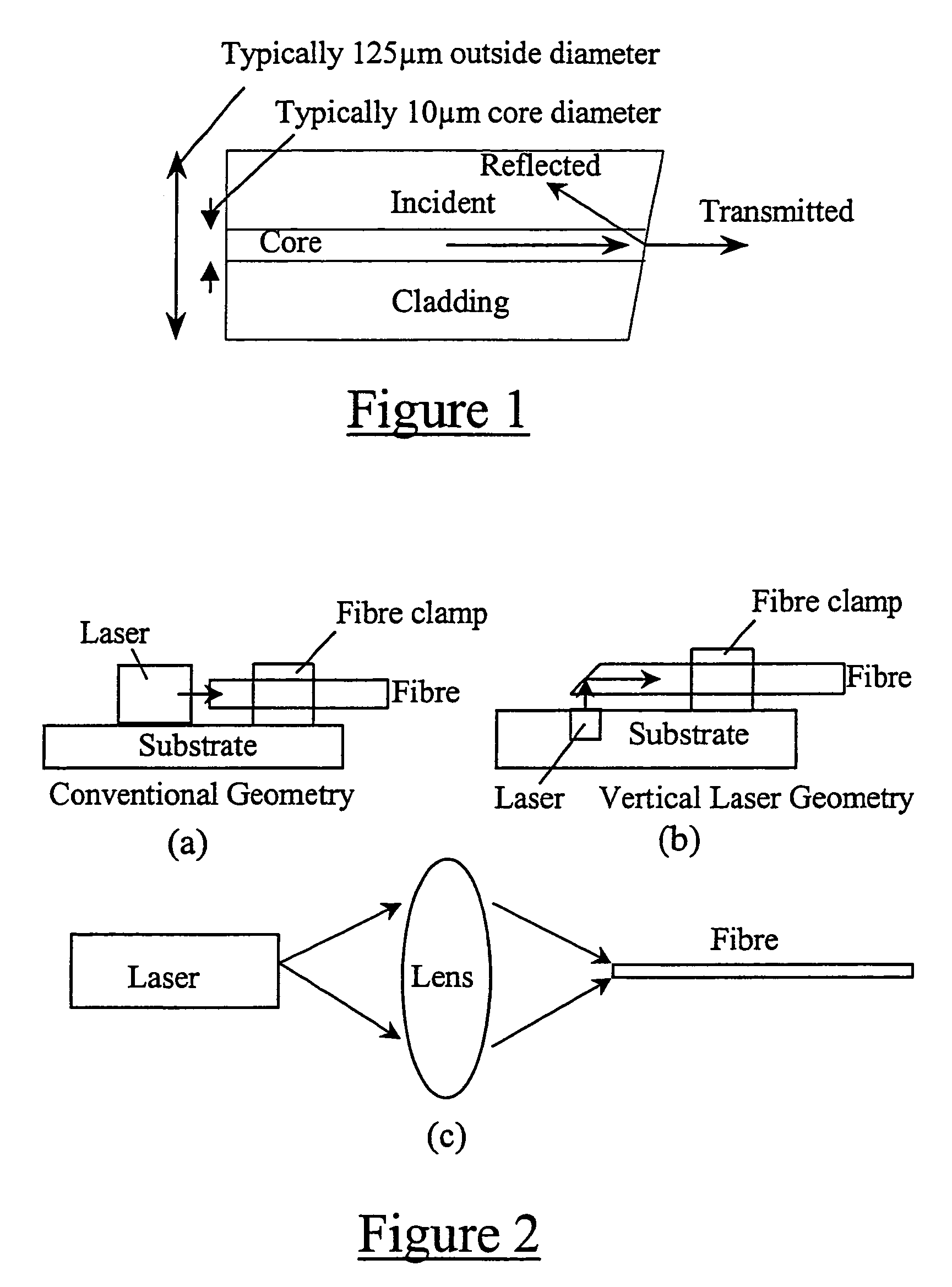Laser cutting method and apparatus for optical fibres or waveguides
a laser cutting and waveguide technology, applied in the direction of laser beam welding apparatus, glass making apparatus, instruments, etc., can solve the problems of not connectorising, causing very sharp edges on the corner of the cleaved (cut) fibre, and being susceptible to handling damag
- Summary
- Abstract
- Description
- Claims
- Application Information
AI Technical Summary
Benefits of technology
Problems solved by technology
Method used
Image
Examples
Embodiment Construction
[0064]FIG. 5 illustrates, in schematic form, how the cutting action of a method of the invention is effected on a portion of optical fibre or waveguide so as to form an optical fibre or waveguide surface of enhanced quality. More specifically, as shown, the cutting action is affected by impinging an amount 1′ of a predetermined laser intensity distribution 1, for example in the form of a Gaussian intensity distribution 1, onto a section 2 (to be cut) of fibre or waveguide material 3 in alignment therewith and ablating or vaporising the fibre or waveguide section 2. Regions 4 of the fibre, adjacent to the fibre section 2, are further subjected to significant levels of heating in dependence upon the impingement, the regions 4 being heated to an appropriately significant level below the fibre or waveguide material's vaporisation point.
[0065]Advantageously, the laser cutting procedure of the invention does not involve the production of a mark on the fibre periphery and then mechanical f...
PUM
| Property | Measurement | Unit |
|---|---|---|
| wavelength range | aaaaa | aaaaa |
| wavelength range | aaaaa | aaaaa |
| wavelength range | aaaaa | aaaaa |
Abstract
Description
Claims
Application Information
 Login to View More
Login to View More - R&D
- Intellectual Property
- Life Sciences
- Materials
- Tech Scout
- Unparalleled Data Quality
- Higher Quality Content
- 60% Fewer Hallucinations
Browse by: Latest US Patents, China's latest patents, Technical Efficacy Thesaurus, Application Domain, Technology Topic, Popular Technical Reports.
© 2025 PatSnap. All rights reserved.Legal|Privacy policy|Modern Slavery Act Transparency Statement|Sitemap|About US| Contact US: help@patsnap.com



